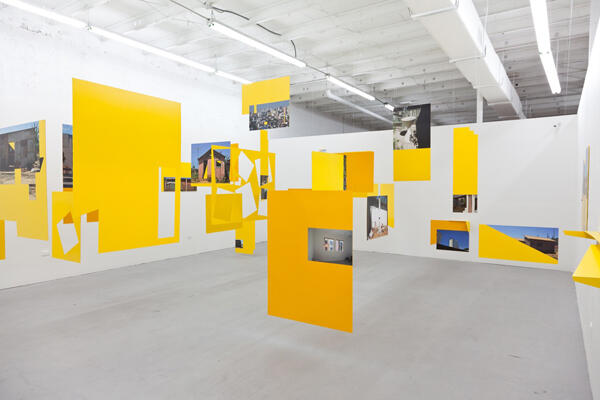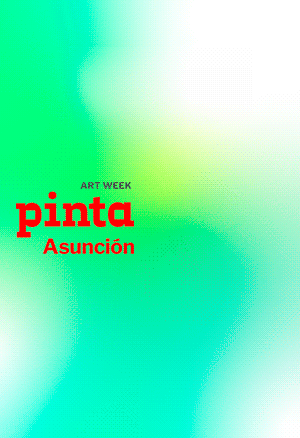Sergio Vega
Kabe Contemporary, Miami
Sergio Vega (Argentina, 1959) is featuring the exhibition “Disassembling Paradise”. A paradise he alludes to through two of his series, “Parrot Color Charts” and “Shanty Nucleus After Derrida 2”.

A paradise that is born in these series from color, in strong or primary tones. From the plane to space, between the tropic of the humid rainforest and that of urban disintegration.
The exhibition has its point of departure in the chromatic decomposition of the photograph of a cockatoo –or a parrot- sitting on a branch, a sort of Mondrianesque superposition on the print featuring a new exuberant world, whose habitat was “marketed” under the notion of paradise. Although these coordinates are offered to Vega by his fellow countryman Antonio de León Pinedo (1589-1660), they still bring to mind Columbus repeating “this is the most beautiful land.” Precisely against the background of this beauty, the images in “Parrot Color Charts” are gradually depurated towards an increasingly purist spectrum that refers us to Op art, modern art, geometric abstraction, and inevitably, the technological revolution.
In the interstices where he juxtaposes his planes, civilization and barbarianism, exaggeration and synthesis coexist; the symbolical paradoxes that are condensed in the history of Latin American art. The second series, which occupies the center of the exhibition hall, goes precisely in that direction, and with greater precision It features a dialogue between Jacques Derrida and Helio Oiticica on the constructive layers along which urban segregation stretches out.
“Shanty Nucleus after Derrida 2” is explicit in its reference to the series of Oiticica’s nuclei, in which the artist created chromatic environments with multiple panels painted in intense colors in gradual tones, only Vega places a much greater emphasis on the perceptive experience. While Oiticica resorted after this series to the sources of samba and to the party-color associations, fruit of his relationship with os mangueirantes (members of the samba school of Cerro Mangueira), Vega chooses to re-signify the constructive side on the basis of the same type of source. He chooses the logic of experience; he is interested in the operations of mounting/dismounting the dwellings built in the most adverse conditions. These are the ones he portrays and prints on the panels of nuclear color, playing in turn with the forms in positive and negative, volume, and the angles that escape the plane. Thus he gradually takes possession of the gallery space, seizing little by little an environment which at first sight would appear to be Cartesian, subject to a logical construction immersed in a white cube.
This logic of contraposition of senses which always follows a constructive line that expands towards infinite associations, is the main leitmotiv of “Disassembling Paradise”. A paradise that is still dreaming itself, trying to find itself. And that, in addition, turns out to be too complex, not at all univocal. Perhaps for this reason, it turns out to be a possibility still outside of history, inscribed perhaps in the very evolution that Derrida referred to.
The tropic has recently experienced a revitalization based on the curatorial projects of Pablo León de la Barra, especially in different countries in Latin America, and it is related to works such as Chemi Rosado-Seijo’s El Cerro, 2001,in Puerto Rico, and the exhibition “Mayami Son Machín”, 2011, by Proyectos UV, at Diet Gallery, in Miami.





